
Perch in the coastal area
On this page
Coastal perch catches were significantly higher than average in 2023. Based on the population estimate, the Archipelago Sea perch year classes 2016-18 look fairly strong. In 2022, perch abundance and biomass estimates continued to grow.
The decline in fishing effort of perch fishing seems to have levelled off, so catches of coastal perch are likely to remain more or less at the same level in the coming years. If the perch biomass in the Archipelago Sea continues to grow, it will enable a larger catch than before, even if the fishing effort does not increase.
The data reflects the state of the fish population in 2023, updated on 8.8.2024
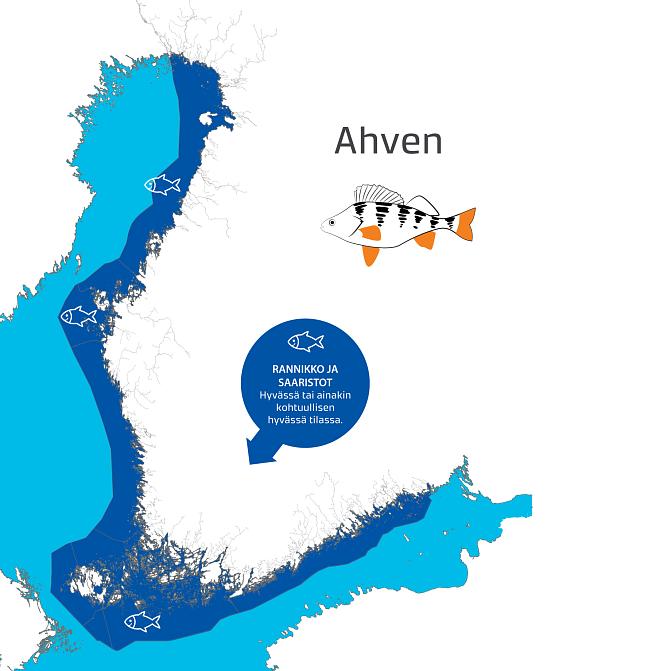

The year class strengths of perch
Based on the latest population assessment carried out with VPA (virtual population analysis), the year-classes 2017-18 of perch[OM(1] in the Archipelago Sea would look fairly strong at this stage. The strength of these year classes is supported by their high share of good catches in 2023 (net catch share of 24% and 39%, respectively). In addition, the share of the year class 2019 was 20%.
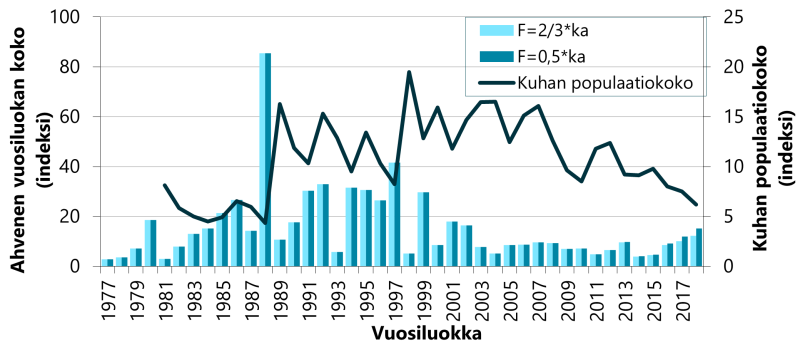
The estimated perch stock size (≥5-year-olds)
According to VPA, the number of individuals in the perch population in the Archipelago Sea in 2022 seems to continue to rise from the trough of 2020, and this still uncertain estimate is supported by the abundance of commercial catches. In 2022, the biomass estimate for the perch population was clearly higher than in previous years and was already approaching the level of the peak years. The average size of perch in commercial fishing has increased (Olin & Raitaniemi 2022b), and the biomass estimate of the perch population has been relatively high since 2009 compared to the estimate of the number of individuals.
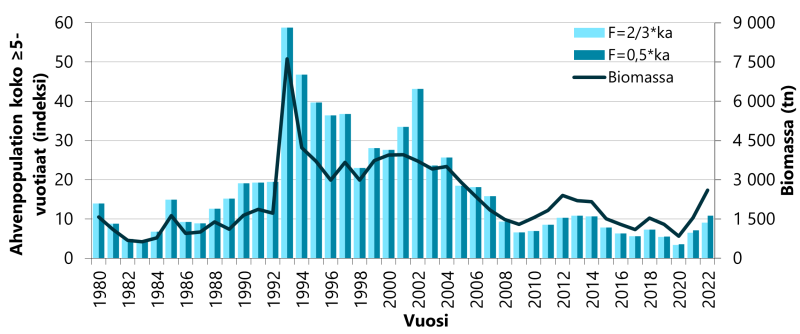
The catch of perch in the commercial fishery, and the biennially estimated recreational perch catch
In 2023, coastal commercial perch catches (900 tonnes) decreased by 8% compared to the previous year, but were still significantly above average (644 tonnes). The annual catch of perch by commercial fishers in the sea area has fluctuated sharply, but has been increasing again since 2018. Perch catches in commercial fisheries increased in the north and decreased in the southern sea areas. In 2023, the Archipelago Sea accounted for 44% of commercial fishing along the coast, the Bothnian Sea for 26%, the Bay of Bothnia for 14% and the Gulf of Finland for 3%. The Kvarken catch share was 9% (83 tonnes).
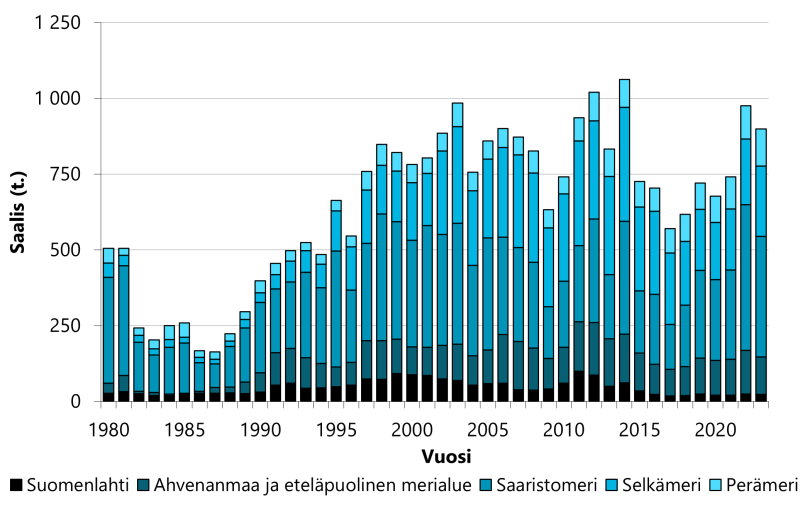
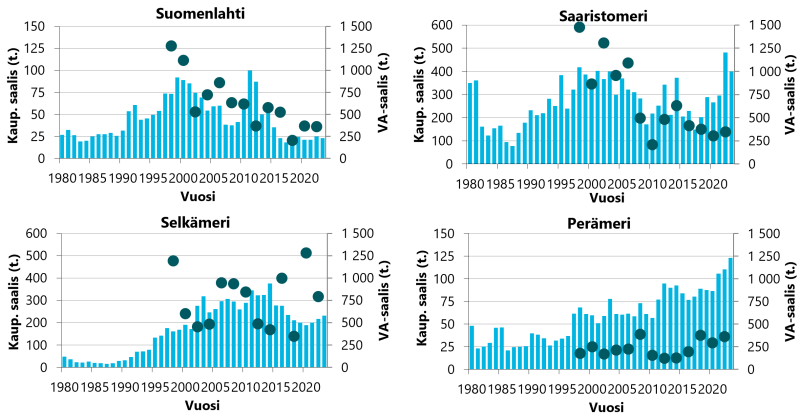
The gillnet fishing effort and CPUE of commercial perch fishery
In 2023, the total catch in recreational fishing along the coast was estimated at 1920 tonnes, which was about double that of commercial fishing. In the southern sea areas, the decline in recreational catches seems to have stopped. In the Bothnian Sea, catches of recreational fishing have varied a lot. In the Bay of Bothnia, the catch seems to be rising slightly.
The gillnet fishing effort on perch has decreased in all sea areas, but in the latest years the decline seems to have stopped. In recent years, fishing effort has clearly been highest in the Bothnian Sea and lowest in the Gulf of Finland. Catch per unit effort (CPUE) has been on the rise in all sea areas. In the Archipelago Sea, CPUE of 0.36 kg/net day in 2023 decreased from the peak catch in 2022, but was still significantly higher than average. In the Bothnian Sea and the Bay of Bothnia, CPUEs remained at the high level of previous years. The CPUE in the Gulf of Finland is lower than in other sea areas, 0.17 kg/net day in 2023.
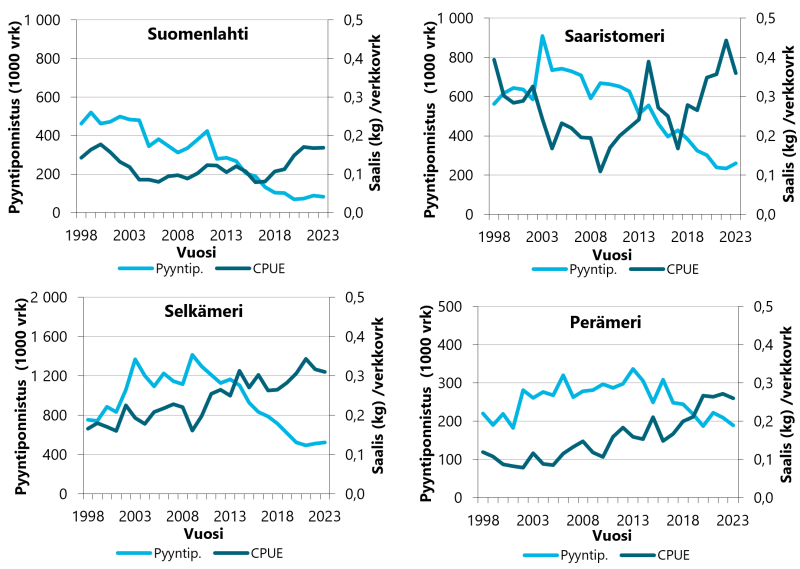
Sources
Olin, M. & Raitaniemi, J. 2022b. Merialueen ahven. Julkaisussa: Kalakantojen tila vuonna 2021 sekä ennuste vuosille 2022 ja 2023 : Silakka, kilohaili, turska, lohi, meritaimen, siika, kuha, ahven ja hauki. Luonnonvara- ja biotalouden tutkimus 72/2022: 108-117.
Expert

